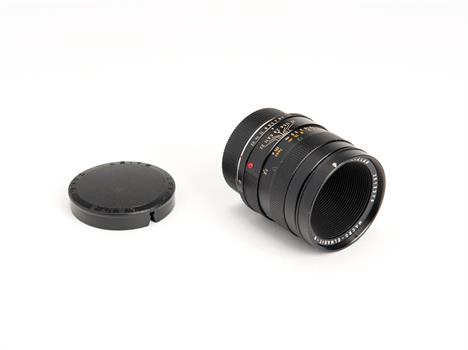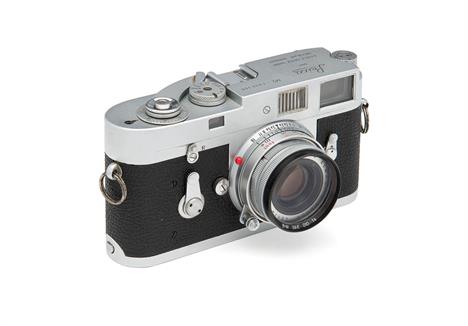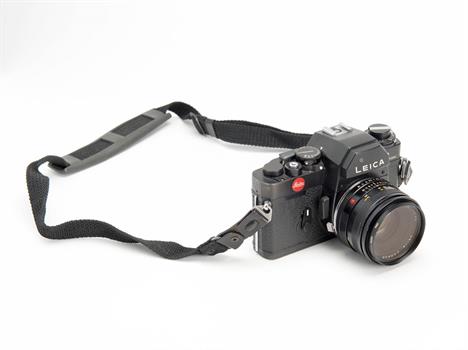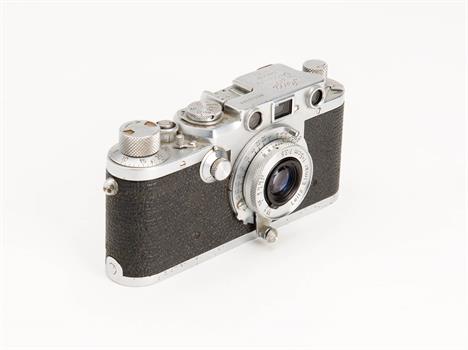A pair of German World War II Third Reich Dienstglas fixed focus U-boat binoculars by Emil Busch A.G., Rathenow7 x 50 magnification, the lenses with heavy duty rubber shroud protectors, serial number 457001.Note: sold with accompanying typed note inscribed "These field glasses were given to me by my RSM Harry Claydon (Welsh Guards) when I was commanding 60th Anti-Tank Regiment (Royal Welsh Fusiliers) in Italy. He always accompanied me in my jeep and found the glasses on a dead German in a derelict tank". CONDITION REPORTS: Generally in good condition, expected wear, some slight splits to rubber lens boots and shroud covers, some chipping to paint, protective coating with some losses/perishing, screws with evidence of use, lenses seem to be in good order with some light surface scratching.
We found 80826 price guide item(s) matching your search
There are 80826 lots that match your search criteria. Subscribe now to get instant access to the full price guide service.
Click here to subscribe- List
- Grid
-
80826 item(s)/page
LEITZ (Germany): Leica screw mount camera Leica IIIc with military markings. A 1940 Leica IIIc SN 361739 with Elmar 5cm f3.5 lens, the shutter with soft release. The camera markings are those associated with the German airforce - "Fl. No 38079" on top and "Luftwaffen - Eigentum" on the rear of the top plate. No other relevant markings are seen on body or lens. The vulcanite is in excellent condition and may have been replaced at some time. Note the unusual "w" and "u" in the inscribed script, each matching that seen in similar cameras sold previously at auction (see e.g. WestLicht lot 59 - May 2007 and lot 30 - November 2007) and identified as authentic military Leicas.
LEITZ (Germany): Leica camera cases. A varied group of leather Leica camera cases, some for screw mount cameras some for M series. Noted a rare ETRIN (for Leica I Mod A). Three cases include a metal Leica lens cap, two cases are not manufactured by Leitz. (8 cases) Illustrated online at: www.mossgreen.com.au
KILFITT (Germany): A Heinz Kilfitt Fern-Kilar 400mm f5.6 C LTM/M39 mount lens SN 220-0682. The lens with provision for slot-in filters is detachably mounted on a worked timber (gun stock-like) shoulder grip with integrated cable release. With rear cap, hood, and fitted maker`s leather case. Illustrated online at: www.mossgreen.com.au
A small group of large format cameras. The group consisting of a Thorton Pickard Horizontal Reflex with Carl Zeiss Jena Tessar 14.5cm f2.7 lens SN 649440 with lens cap. A Graflex Speed Graphic with Optar 135mm f4.7 lens and Graflok back and an attractive late 19th- / early 20th century timber and brass folding field camera together with related plate holders and other parts in a case. Also a set of timber tripod legs suited to the third camera. (3 cameras) Illustrated online at: www.mossgreen.com.au
A lacquered and patinated brass monocular microscope, J. Swift and Son, London, late 19th century, The lacquered brass body tube with rack and pinion coarse and fine top-screw focus adjustment and twin lens nosepiece fitted to the complex patinated brass limb above square U-shaped stage with sub-stage condensor incorporating iris diaphragm and pivoted plano-concave mirror to underside, mounted via a hinge joint onto quadrapod base incorporating upward pivoting rear supports for storage engraved J. SWIFT & SON, LONDON, PATENT 24960 to upper edge, height 30cm (12ins) approx; with original mahogany box fitted with various accessories including two objective canisters, two alternative substage lens assemblies and an external light magnification lens with stand, the box 31cm, (12.25ins) high. The firm of J. Swift and Son was founded in 1853 by John Powell Swift, his son, Mansell James, joined the company in 1884. J. Swift and Son supplied microscopes for Captain Scotts 1901-4 expedition to the Antarctic on the R.R.S. Discovery. The business continued under the management of subsequent generations before being merged with E.R. Watts and Son in 1946 and was bought-out by John H. Bassett in 1968.
A fine Regency lacquered brass universal pattern compound microscope, William and Samuel Jones, London, early 19th century, The moulded sighting tube with knurled edges to the threaded sections and screw-fitted at the objective end to a pivoted arm attached to the top of the square section limb upright over rectangular eared stage secured via collar with screw for fine up/down focus adjustment and with x and y object positioning screws, beneath the stage and fitted to the same rectangular section limb upright is a condensor lens mounted on a cranked bracket over a pivoted plano-concave mirror, the assembly supported via a rotating hinge joint onto a column turned upright issuing three folding horizontal supports with angled feet, one signed W. & S. JONES, 30 Holborn, London to upper surface, the original fully fitted mahogany box with a comprehensive and almost complete selection of original accessories including five objective lenses, three further lieberkuhn objectives, rotating slide accessory stage, sprung slide holder, ivory specimen canister, two specimen forceps (one fitted with viewing lens), three large boxwood sliders, bullseye condensor lens and a few additional later items, the box 36cm (14.25ins) wide; with a large quantity of mainly home-prepared slides, 19th century and later, including a handful of professionally prepared slides within card trays, the box 28.5cm (11.25ins) wide, (2). The partnership between the brothers William and Samuel Jones is recorded in Clifton, Gloria Directory of British Scientific Instrument Makers 1550-1851 as operating from several addresses in Holborn, London 1792-1859 (including 30 Holborn 1800-1860). The current lot is very similar to Jones Most Improved Compound Microscope and Apparatus which was based upon a design originally conceived by George Adams and published in the 1798 edition of his Essays on the Microscope. A similar microscope by Dollond was sold in these rooms on Wednesday 17th February 2010 (lot 8) for a hammer price of £3,200.
A French mariners lacquered brass hand-held sighting compass, Doninelli, Nice, late 19th century, Of cylindrical form with top surface inset with a silvered compass engraved with the eight cardinal points within outer scale calibrated in degrees set behind bevelled glass, the cylindrical body divided into two sections with the lower section incorporating inset silver collar scale divided in degrees rotating against a vernier scale engraved to a similar collar to the lower margin of the upper section, with two sets of pierced wire sights set at ninety degrees to each other and signed Doninelli a Nice, the lower section with single sight, rotation adjustment screw to underside and tapered brass handle, diameter 8cm (3ins approx.); with an English black japanned brass sextant, H. Hughes and Son Limited, London, early 20th century, the diamond lattice-pierced six inch radius frame with pivoted arm applied with HUSUN trademark label and mounted with mirror opposing aperture for the brass vernier scale, the main scale signed H. HUGHES & SON LTD LONDON beneath number 28394, the frame fitted with fixed sighting tube opposing mirror with wooden grip handle and three feet to underside, 27.5ins (10.75ins) wide overall; and a patinated brass aneroid surveyors barometer, Stanley, London, early 20th century, with circular silvered scale calibrated in barometric inches within another calibrated in feet with vernier adjusted via knurled crown to outer track, with fine blued steel pointer and inscribed Surveying Aneroid Compensated, STANLEY, LONDON, 2023 to the recessed centre, the exterior with pivoted vernier lens and suspension loop incorporating vernier adjustment crown, diameter 8cm (3ins approx.), with original protective leather case, (3)
-
80826 item(s)/page




























































